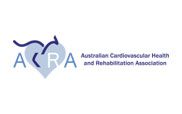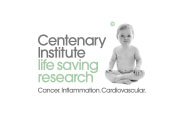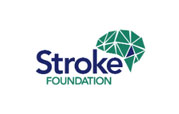OverviewThe most common type of arrhythmia, affecting almost half a million Australians. Abnormal electrical signals cause the heart?s two top chambers to quiver rather than contract. This may lead to a fast and uncoordinated heartbeat, which is not in time with the lower chambers of the heart. It can lead to blood clots forming in the heart, increasing the risk of stroke. It can also lead to heart failure and other heart-related complications.By itself, atrial fibrillation is not usually life threatening. But it is a serious condition due to its possible complications. So proper diagnosis and treatment is important in allowing you to live your life to the fullest. |
There are several different kinds of atrial fibrillation. These include:

Some people with AF may not experience any symptoms. When symptoms are present, they can include:
![]() ? Fast, fluttering heartbeat
? Fast, fluttering heartbeat
![]() ? Shortness of breath
? Shortness of breath
![]() ? Chest pain
? Chest pain
![]() ? Dizziness or fainting
? Dizziness or fainting
![]() ? Fatigue
? Fatigue
![]() ? Weakness
? Weakness
Treatments can include:
![]() ? Medicines, including:
? Medicines, including:
This procedure gives an electric shock to the heart to help it get back to a normal rhythm. Electrode pads are placed on the chest, and medicine is given through a vein to put you to sleep during the procedure. The electrodes are connected to a cardioversion machine (defibrillator) via wires. This machine checks the rhythm of your heart and delivers shocks to the heart to restore a normal rhythm. Once you are asleep, the procedure usually only takes a few minutes. Risks of the procedure include: developing another abnormal heart rhythm, dislodging existing blood clots which can lead to stroke, or skin damage where the electrodes are placed. These risks are uncommon, and your doctor will discuss the risks and benefits of this treatment with you. For most people, the procedure quickly restores a normal heartbeat, allowing you to get back to your usual activities after a very quick recovery. Long term medication may also be needed to help the heart to continue beating normally.
This is similar to electrical cardioversion in that it aims to get the heart back to a normal rhythm, but instead of using an electric shock, a medicine (flecainide or amiodarone) is used. The medicine may be given to you though a vein. This only lasts a few seconds, but can make you feel quite unwell for those few seconds. It is typically not quite as effective as electrical cardioversion, but has the advantage that you do not need to be sedated, and it does not involve electric shocks. Risks of the procedure include: developing another abnormal heart rhythm, increased occurrence of the original abnormal heart rhythm, side effects of the medicine used, or dislodging of existing blood clots. These risks are uncommon, and your doctor will discuss the risks and benefits of this treatment with you. Most people recover very quickly after chemical cardioversion, and feel better with their heart being back in a normal rhythm.
In this procedure, heat or cold energy is used to modify the tissues of the heart that create the abnormal signals. Risks of ablation can include: bleeding, infection after surgery, damage to blood vessels or heart valves, a new or worsening arrhythmia, blood clots, stroke or heart attack. Your doctor will discuss the risks and benefits of this treatment with you. Although there are a number of possible risks, the procedure is generally considered low risk, and can be done with an overnight stay or as a day procedure. It is common to get a flare up of atrial fibrillation in the first month or two while the ablated heart tissue settles down. It is also possible that AF may return even after the ablated tissue settles down. If this happens, another ablation or a different treatment may be needed. After an ablation you may need to take anticoagulant medicine long term to prevent stroke, if your stroke risk is high enough.
This is similar to ablation, but produces a ?maze? of small scars in the upper chambers of the heart. The scar tissue does not carry electrical signals, so it stops the abnormal electrical signals that cause AF from travelling through the heart. This procedure is most often done when the person also needs heart surgery for other reasons, such as a heart valve repair. Risks of the procedure are low, but include: infection following surgery, bleeding, blood clots which can lead to a stroke or heart attack, kidney failure, or other abnormal heart rhythms. Your doctor will discuss the risks and benefits of this treatment with you. Although there are some risks, this procedure can improve symptoms and quality of life.
This may be used if you have AF along with another arrhythmia, or to allow use of medicines for AF if your heart rate is slow. It can also be used in combination with an ablation if your AF cannot be controlled using medicines alone. A pacemaker is a device that is implanted in the body that sends electrical signals to the heart to help it keep a steady heart rhythm. Risks associated with getting a pacemaker include: infection following implantation of the device, bruising or bleeding at the site of implantation, blood clots, damage to blood vessels or nerves, bleeding between the lung and chest wall, collapsed lung, problems with the device stimulating muscles other than the heart, or problems with the device or its leads moving within the body. These risks are uncommon, and your doctor will discuss the risks and benefits of this treatment with you. A pacemaker can help improve your daily life, and allow you to get back to your usual activities.
Hybrid catheter ablation and surgical ablation (HyCASA). The HyCASA procedure has two stages. In the first stage, a surgical ablation is done, to modify areas of the heart that are causing your HF. You will also have an AtriClip device implanted. This blocks off part of the heart where blood clots can form, and therefore reduces your risk of having a stroke. Six months later, you will have a mapping and ablation procedure to ?touch up? the ablation from the first procedure. HyCASA aims to modify areas of the heart which are causing your AF, interrupting the abnormal electrical signals that cause AF. Most patients considered for this procedure have persistent AF (AF that lasts continuously for more than 7 days), or have had previous unsuccessful procedures. Risks of this procedure are rare, but include: stroke, fluid build-up in the membrane around the heart, damage to structures in the heart, inflammation of the sac around the heart (pericarditis), hernia under the incision, or infection following the placement procedure. Your doctor will discuss the risks and benefits with you. The procedure takes around 3-4 hours, and you will usually stay in hospital for a few days. You will need to avoid driving for 2 weeks after the procedure, and avoid lifting heavy items for 3 weeks.

In addition to medical treatment, positive lifestyle changes can make a big difference. AF is strongly related to high blood pressure, obesity, sleep apnoea and lack of physical activity. Making lifestyle changes can help manage AF and reduce your risk of problems such as stroke.
Some positive lifestyle changes your doctor may suggest include:
![]() ? Controlling high blood pressure, cholesterol and diabetes
? Controlling high blood pressure, cholesterol and diabetes
![]() ? Eating heart-healthy foods, including a diet rich in fruit, vegetables and whole grains, that is low in salt and fat
? Eating heart-healthy foods, including a diet rich in fruit, vegetables and whole grains, that is low in salt and fat
![]() ? Maintaining a healthy weight
? Maintaining a healthy weight
![]() ? Exercising regularly
? Exercising regularly
![]() Reducing your alcohol consumption
Reducing your alcohol consumption
![]() Quitting
Quitting





